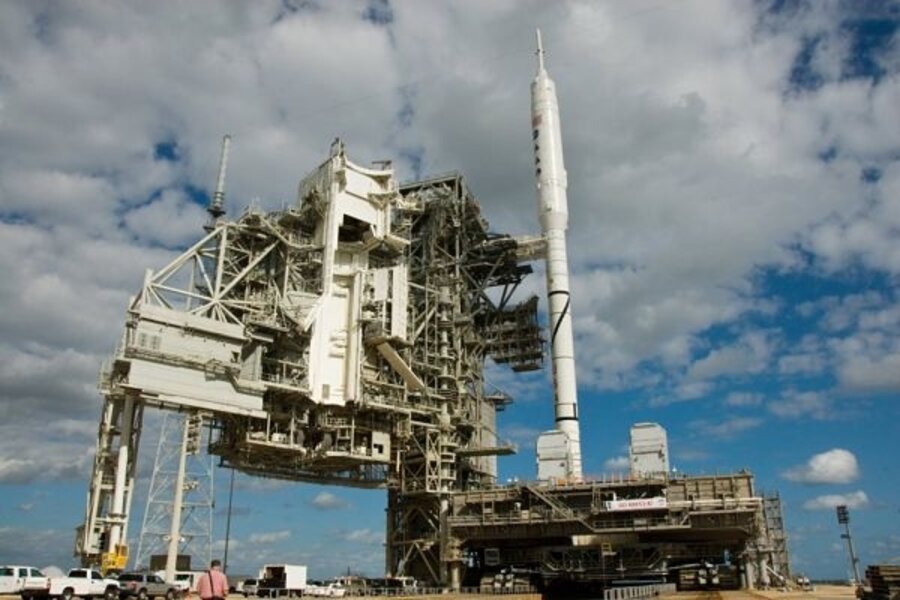NASA's Ares 1-X rocket gives launch day a whole new look
UPDATE: The launch has been delayed until Wednesday morning. Here's the latest...
-----------
NASA's Ares 1-X rocket is waiting for its two minutes of flame. It's set for launch at 8 a.m. this morning, Eastern Daylight Time.
Weather remains a concern. But once it's OK to launch, this rocket's rise will have a significantly different look and feel than the shuttle launches people have become accustomed to seeing.
That's the word from Jeff Spaulding, test director at the Kennedy Space Center in Florida.
Ah the joys of a simpler, if experimental, system.
To begin with, the countdown is far shorter, Mr. Spaulding explains. For a shuttle, countdown begins 43 hours before the scheduled launch time. For Ares 1-X, it's seven hours.
When it comes time to light the fires, the shuttle's ignition and lift-off are pikers compared with the Ares 1-X.
The shuttle's main engines ignite a couple of seconds before lift-off, which happens once the two solid-fuel motors explode to life.
Explode? If you can't attend a launch, go see the IMAX film, "The Dream Is Alive" if it comes around again. When the main engines light, it's a loud rumble that quickly gets louder. When the solids light up, the sound arrives with impact -- like a gentle punch to the stomach.
With Ares 1-X, look for that single punch.
Once the lighter, nimble Ares 1-X lifts off, it will scoot -- no slow rise to the skies here. The whole mission -- from launch to separation of the reusable first stage from the dummy upper stage -- takes about 2 minutes.
Once off the pad, it will head east over the ocean and splashdown roughly 300 seconds later.
And if something goes wrong during launch? The range-safety offices detonates a "shaped charge" of explosives runs the length of the motor. It's designed to focus its explosive energy in a way that splits open the motor casing from one end to another. This allows the remaining solid fuel to burn randomly as the casing falls back to Earth. In NASA-speak, that's called "thrust termination."
During the Ares 1-X's flight, some 700 sensors will be recording all kinds of information about the rocket's behavior and the environment the rocket encounters.
The goal is to design a launch vehicle for humans that NASA can launch under as broad a range of weather and wind conditions a possible. That means knowing what kind of sound waves the motor generates and how those waves rattle the rest of the rocket, for instance. Or how the 327-foot-tall stack bends as it encounters changes in wind speed or direction with altitude.
The rocket's sensors will be making measurements many times each second and will radio the data back throughout the flight. The data also will be stored on board the recoverable solid-fuel motor.
Once NASA recovers the motor, engineers will remove the sensors, and compare the quality of stored data for each sensor with the quality of the data radioed back to Earth from that same sensor. The best data set from each will be used to analyze how the rocket performed. The data then will be used to provide a reality check on the computer models engineers are using to design the full-up Ares 1.
As for the dummy upper stage, it reaches an altitude of about 150,000 feet, then falls back into the ocean roughly 147 miles from the Florida coast. It becomes another piece of space-age debris on the ocean bottom. Or perhaps the starting point for another Dirk Pitt undersea adventure.





